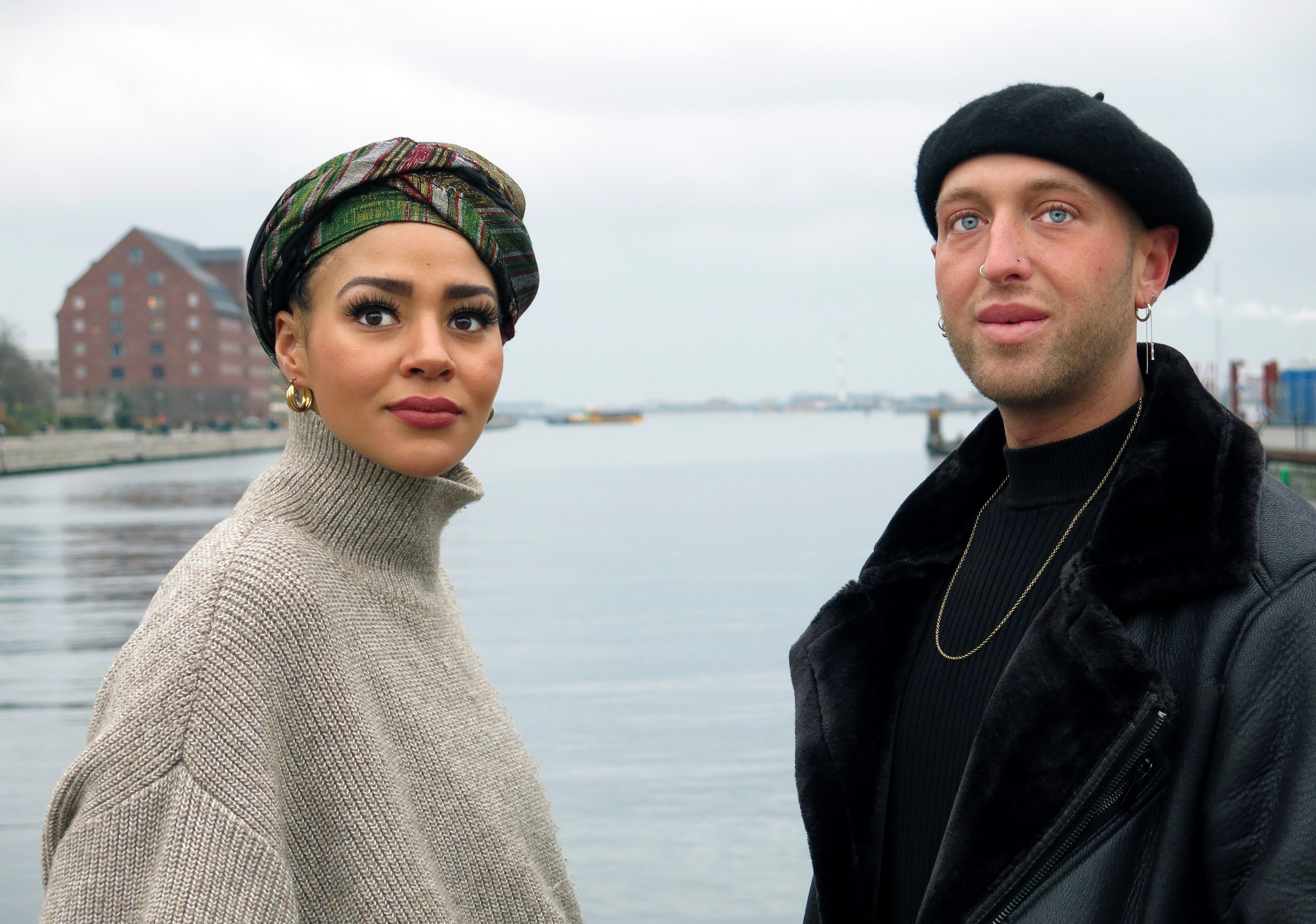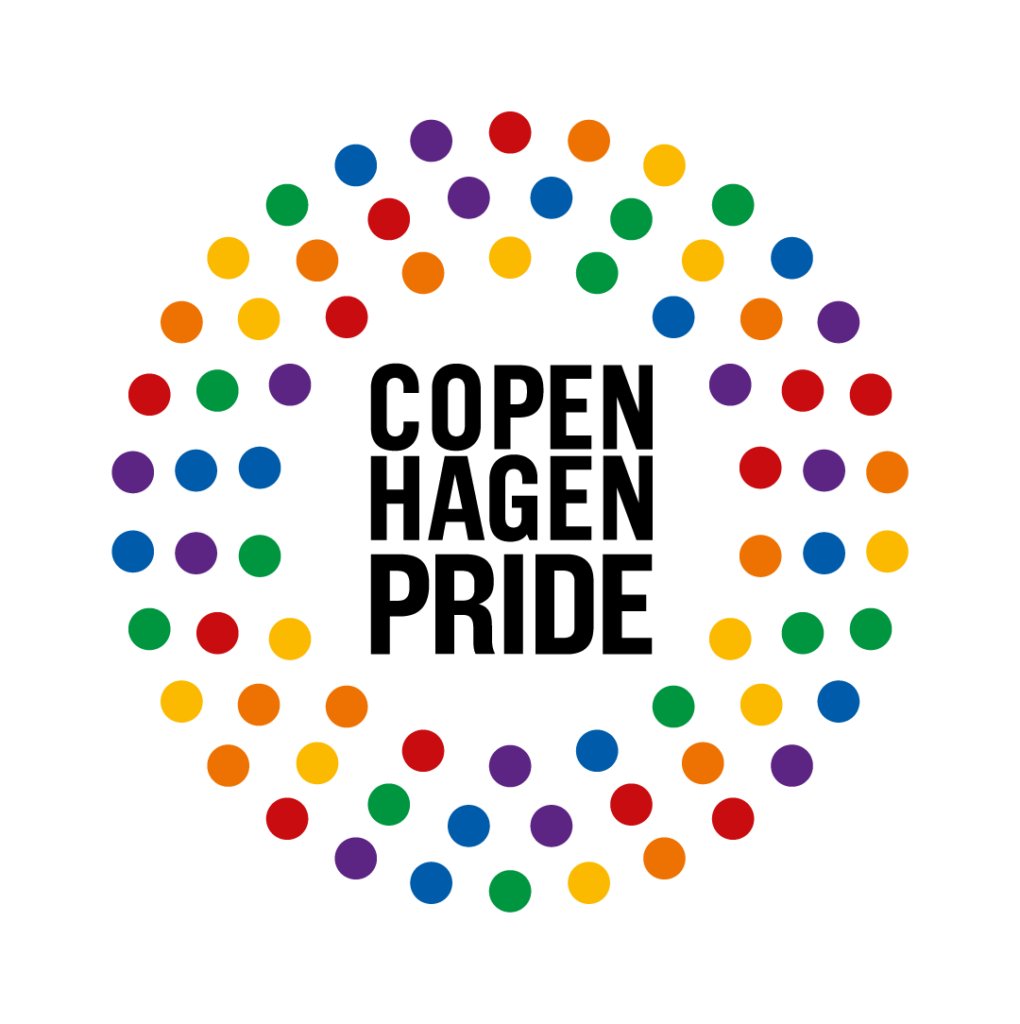
Denmark’s First Intersectional Folk High School
By Lærke Vinther Christiansen
A dark winter night, Asta Selloane Sekamane, André Lund Rømer and I meet up in true 2020 style, on Zoom, to have a chat about Denmark’s newest educational platform: Denmark’s Intersectional Folk High School (DIH). Of course, we spent the first 10 minutes performing the inevitable ritual of online conversation, where we in turn ask the two others whether they could hear us. After establishing that we can actually hear each other, there we sit; me in my Swedish apartment, André in his home, Asta in a stairway – alone, yet together, exactly as 2020 has decided it must be.
Lærke: Tell me a little bit about yourselves and what your roles are in DIH?
Asta: My name is Asta Selloane Sekamane, and I am the chairperson of DIH’s board. I’m 30 years old, the child of a 5’11 white woman with mousy hair, and a black, politically active refugee from Lesotho. I’m also a geology student, mother of three boys, and board member in Afro Danish Collective, and also on Elle Magazine’s new Diversity Board. As chairperson, I often get to be the public face of DIH, and the one who needs to keep a general overview, though thankfully I have André at my side. I’m a good planner, and I’m rather good at mind-managing, so my task is to stay on top of things and make sure that everything is running smoothly.
André: My name is André Lund Rømer. I’m 29 years old, and I’m enrolled at university from autumn 2021. Until then my main focuses are my work at DIH and a few other projects. I grew up on Bornholm with my parents and two brothers. In my upbringing, I experienced a great exclusion from the outside world, the feeling of not fitting in. It’s especially that feeling that motivates me in my work, that no one should feel left out, alone, or worthless. For many years, I’ve engaged in activism, volunteering, and organizational work. At DIH I’m the treasurer, so I’m responsible for finances, marketing, and supporting the board in their work.
What’s the story behind DIH?
Asta: DIH is Mica Oh’s brainchild. Mica Oh is an antiracist educator, an amazing woman who has gathered a plethora of knowledge that has not been filtered through the white man’s lens. She has an immense amount of knowledge of intersectionality and how various kinds of structural oppression affect different people. This applies to minorities, e.g., based on either gender, race, or sexuality, but also people who do not belong in a minority group. So, this is her dream – to create a space where there is room for anyone who deviates from the norm, where there is room for all the intersections that our world isn’t built for. That is the incentive that has brought Mica Oh to bring together a lot of amazing people that she believes in, and in whom she sees a lot of qualities. She has gathered people who has plenty to say and are ready to put in the necessary work required to build an educational institution from the ground up.
André: The story is just as much a question of the students not receiving lessons on a topic about them but rather from them. It is in this connection that Mica Oh put together a board so diverse that you don’t have to speak on behalf of others.
DIH is different from any other folk high school, precisely because it is intersectional and because it’s online. What were some of your thoughts behind this basis?
Asta: We are part of a segment of people who fit into different intersections, and we’ve created this school not only for other people who fit into these intersections, but anyone who needs to learn about intersectionality. Then the subject can be fashion, art, activism, or antiracism, but the entire purpose is that we’re all more than just one thing, and I think that that is the most important purpose of the school. It’s a space where everyone can feel safe.
André: The fact that the lessons are online creates greater accessibility. To us, accessibility is key so that everyone can participate on their own terms, but also that there is a general physical availability. It’s of no consequence what mental, physical, geographical, or other challenges our students have, we will always do our utmost to meet these needs. And it is also great that we can expand our platform and use digital media in new ways in an educational context.
What kind of knowledge can people expect to bring with them after a course at DIH?
Asta: We’re doing something new – we incorporate all the things we like from the conventional education platform, and then we throw away the rest. So, there are definitely some elements from conventional academic education, but it has been combined with a creative approach to these conventional subjects. So, what we’re going to do is move within the intersections of things that aren’t black or white.
DIH is going to have a module-based construction, which means that you can sign up for a 4-week intensive package, but it will also be possible to divide the modules into a more manageable schedule, depending on your current situation. If, for instance, you lack time and energy, it is possible to limit it to one module a week instead of two. We provide a more flexible schedule because we work with people, and we are people ourselves. There also needs to be room for the people who want to, and need to, receive this knowledge, but maybe aren’t racing down society’s highway at the same speed that society thinks they ought to.
We are primarily going to offer our lessons in two languages – English and Danish. We have founded this school because we live in Denmark, and in Denmark, there is a serious lack of intersectional, inclusive spaces in educational institutions. But we also live in a globalized world and a lot of people belonging to our age group feel comfortable with the English language. For this reason, we think that adding an extra language to the curriculum will expand our opportunity to follow with the times and offer representation from different intersections.
André: We are going to work with two different groupings in our lessons that both take up an equal amount of space. There will be the fundamentally practical and academic, where the students are taught the significance of different kinds of structural oppression, and what the different intersections represent. Of course, the courses will be taught by educators who have personal experiences with these intersections. The setting will either be as a lecture, workshop, or other formats – depending on what the educator chooses. We will also offer a selection of creative subjects focusing on diversity, representation, and intersectionality in music, art, literature, acting, and fashion. Here the format of the course will also be up to the educator. So, variation will be visible in all aspects of the courses, which is something that we decidedly prioritize – both in terms of the format of the courses, but also the subjects and the representation of intersections, which needs to be as adequately fulfilled as possible in each course.
What are your aspirations with DIH?
Asta: If everything progresses perfectly, we hope to have a physical location, and from that, we would like to become international. But we also want to be a central part of education in Denmark because what we do, and would like to do, with DIH is to challenge conventional institutions. So, if I can dream as freely and unrestrained as I want, I would want us to sit next to the conventional education institutions in the Ministry of Higher Education and Science. There we would discuss how education should be executed because we are aware that that is the place we need to be if we are to make any real changes.
André: I have the same aspirations, and if you could just add an international stamp on all of it, if I’m allowed to dream uninhibited [laughter].
If there is anyone out there who would like to participate in one of your courses at DIH, or in some other way engage in the project, how can they do it?
Asta: Right now, we have our Instagram account @DIH_Danmark, Facebook account Danmarks Intersektionelle Højskole, and soon we’ll launch our own website. These are platforms where people can follow our work. When there is more information on how to put together the first course, it’ll be announced on these platforms. So, start by saying that your birthday wish is for a financial supplement to help pay for lessons. Nudge your job adviser and say “Hey, alternatively I could go to DIH, it’s not quite there yet, but if we cooperate…” Tell your Trade Union that you need further education and inquire whether anything related to intersectionality is available. Push the boundaries of where you normally go if you want to go to a Folk High School.
We also need to be true to our name, so we, as the board, might hit some of the bigger intersections, but we don’t represent everyone. For that reason, we will have some blind spots and learning curves, so anyone who has the time to help would be great. We are founding the school we wish had been there for us, and that also means that we are dependent on people’s engagement and feedback.
André: Yes, well, I’d say much of the same, but follow us on Facebook and Instagram, and write to us, then we’ll make sure to answer. We’re really nice, and we would love to open a dialogue with people, and if anyone out there feel that they have something to contribute with, then we’ll find a solution that works for everyone until we are able to welcome people to the school for real. And we have a lot of super cool events coming up. There will be some even before the school is up and running. So even if you don’t want to talk to us right now, you will still be able to follow us, and see what is going on. And there will be lots of amazing stuff with the most inspiring people, so you will get to meet us out there. But we are counting on being ready for the first student in Spring 2021.
Asta: We have a lot of things that we need to talk about. So, Denmark – you thought you were ready for 2020, but you have no idea what’s going to happen in 2021!
What is intersectionality?
Intersectionality is a term in feminist theory concerning the intersection between means of expression. It was put into words for the first time by the American academic, Kimberlé Crenshaw in 1989, who in her research, among other things, highlighted specific problems that black women had that were not voiced in the feminist movement. In short, it is about experiencing social inequality based on different aspects of your identity – e.g., as a bisexual woman or a deaf non-binary person – and that the intersections between these aspects of your identity amplify suppression. To think and work intersectionally means acknowledging the intersections and understand your own position in relation to them.
What is a Folk High School?
Folk High School is a translation of the danish term højskole. The concept is an educational institution with no requirements for enrolment and no final examination, where students explore topics of their own choosing. The courses are not free, but you can apply for a variety of grants. Traditionally, these schools would be live-in, but DIH are breaking ground by making their courses available online.



